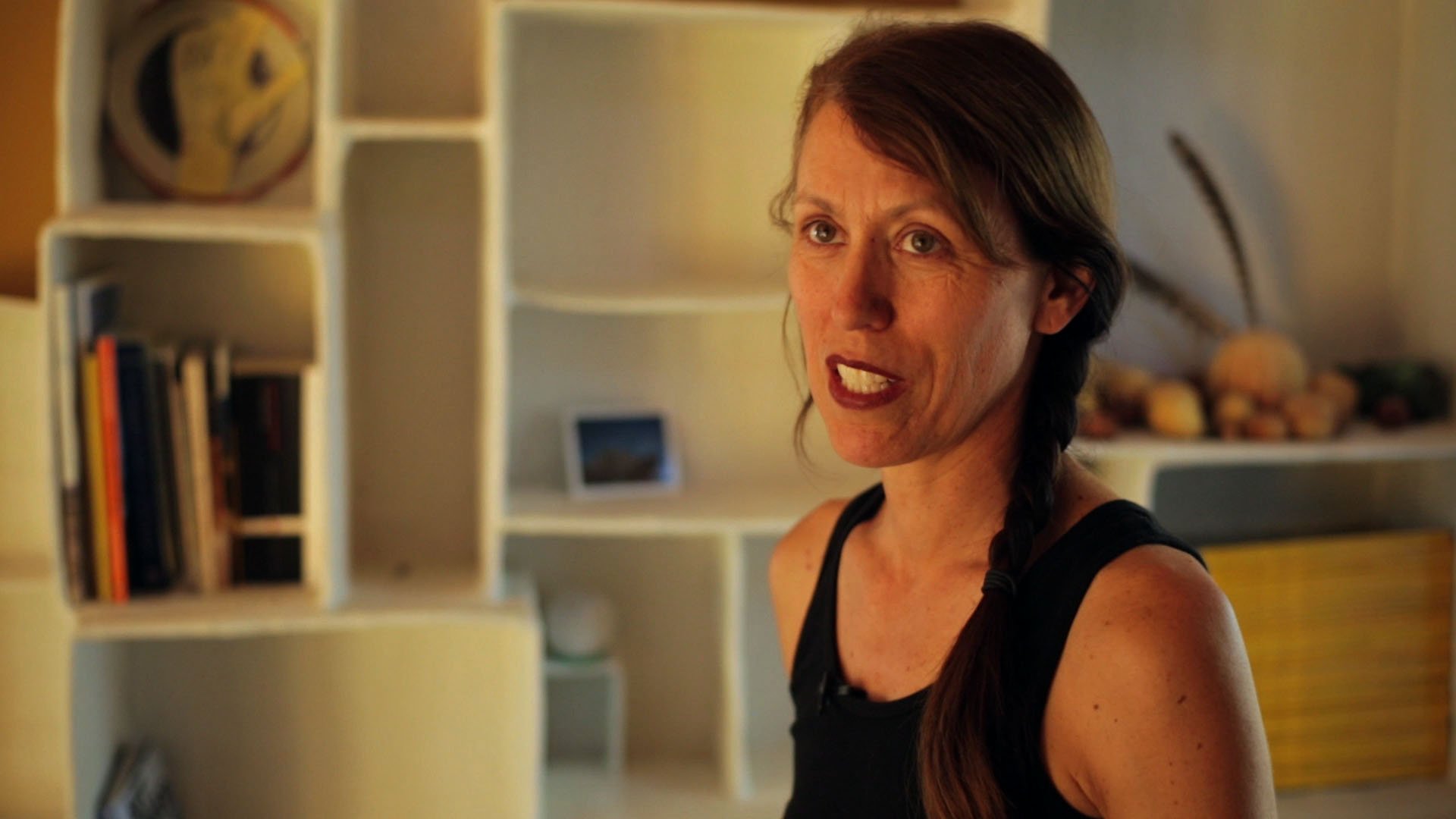
For the artist and native Californian Andrea Zittel, every aspect of her life is an opportunity for discovery and creation.
The artist, who has lived in Joshua Tree’s desert landscape east of Los Angeles for more than 15 years, has fully integrated her art practice with her daily life, incorporating design as a way to bridge conceptual experiments with practical and functional needs.
“Every space that I’ve lived in, I’ve turned into an art project,” Zittel says in an exclusive interview as part of Art21’s “Extended Play” series. She adds that everything in her home “has really evolved with my life.”
Zittel does, however, make a distinction between art and design, noting that “design has power, because it actually touches people in a more concrete way,” while, with art, “there’s more wiggle room and flexibility.”
Production still from the Art21 “Extended Play” film, “Andrea Zittel: Art & Design.” © Art21, Inc. 2015.
In the video, Zittel discusses a series of cardboard boxes that influenced her Aggregated Stacks (2010), modular structures that can become shelving units or discrete art objects, depending on what a person wants or needs.
Right now, at Carnegie Mellon University’s Miller Institute of Contemporary Art, a survey of new and old art and design objects by Zittel are on display in a show appropriately called “An Institute of Investigative Living.”
Watch the video, which originally appeared as part of Art21’s Art in the Twenty-First Century series, below. “Andrea Zittel: An Institute of Investigative Living” is on view at the Miller Institute of Contemporary Art at Carnegie Mellon University. through March 8, 2020.
This is an installment of “Art on Video,” a collaboration between artnet News and Art21 that brings you clips of newsmaking artists. A new series of the nonprofit Art21’s flagship series Art in the Twenty-First Century is available now on PBS. Catch all episodes of other series like New York Close Up and Extended Play and learn about the organization’s educational programs at Art21.org.